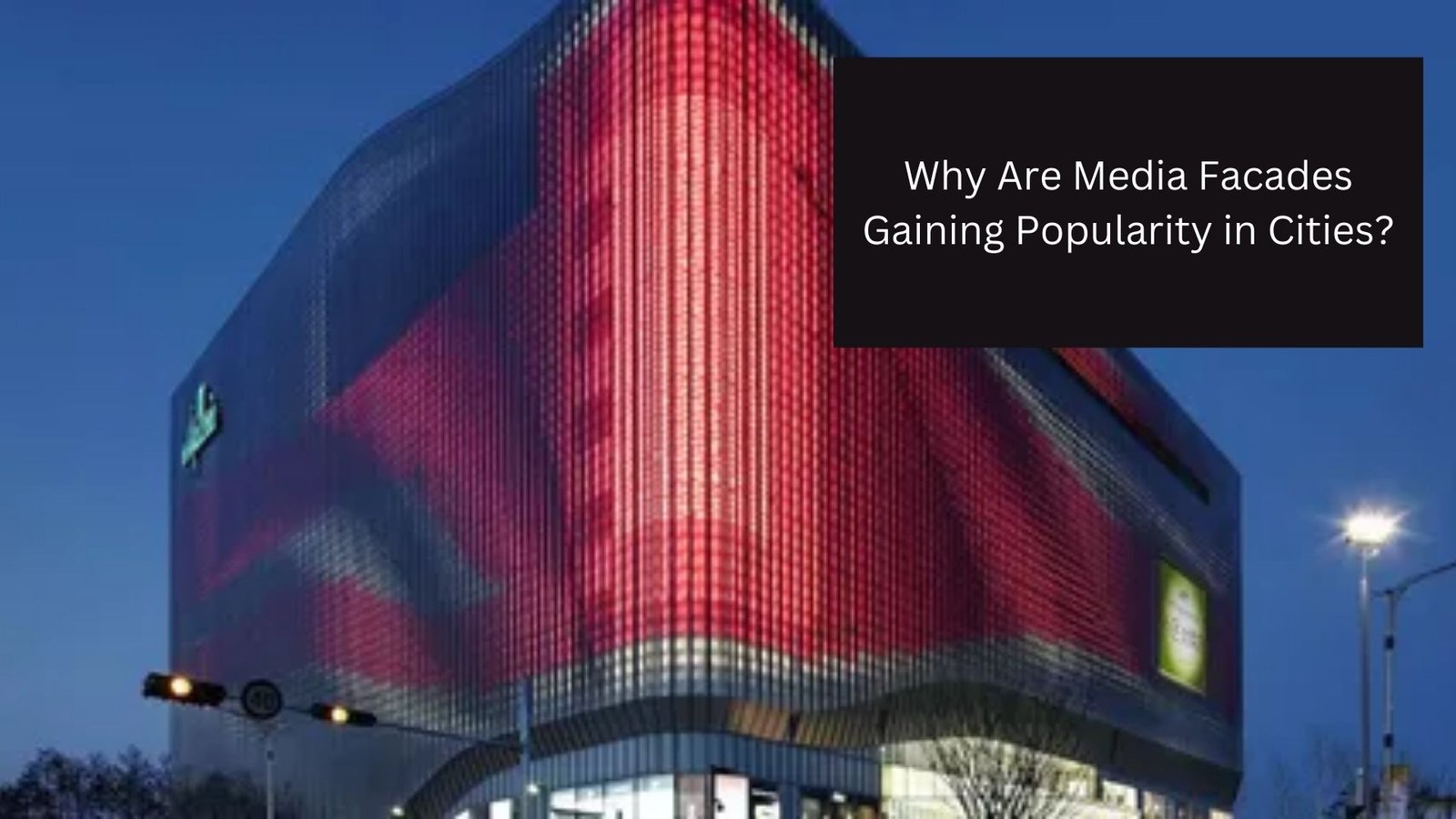In recent years, cities around the world have seen a growing trend in the use of media facades. These dynamic, interactive displays transform the exterior of buildings into vibrant canvases, showcasing advertisements, artistic visuals, or public messages. As urban areas continue to evolve and embrace modern technologies, media facades have become an essential feature of contemporary architecture. But why are they gaining so much attention? In this article, we’ll explore the factors driving the rise of media facades in cities.
What Are Media Facades?
NOTE : The media facade Dubai transformed city skylines, showcasing dynamic visual experiences. Starfacadelighting played a pivotal role in creating these impressive installations. Contact Starfacadelighting today to elevate your building’s design with innovative media facades and leave a lasting impact on your audience.
A media facade refers to a building’s outer surface that is enhanced with digital displays, such as LED screens, projection mapping, or other lighting technologies. These facades can be programmed to display a range of visuals, from advertisements and brand promotions to artistic installations and even public information. In essence, they integrate digital media into the architectural design, blurring the lines between technology and urban spaces.
The Role of Technology
Advancements in technology are one of the main reasons media facades have become so popular. With the increasing accessibility of high-resolution LED panels, projectors, and lighting systems, cities now have the tools to bring their building facades to life. The digitalization of urban spaces allows for high-impact displays that can be customized, updated in real-time, and even interact with the environment or passersby.
Urban Aesthetic Appeal
Enhancing the Visual Appeal of Cities
Media facades play a significant role in enhancing the visual appeal of a city. Modern urban design places great emphasis on aesthetics, with architecture becoming not just functional but also a statement of a city’s identity. Media facades add a layer of vibrancy and innovation to buildings, making them more eye-catching and unique. Whether it’s a bright LED display or a sophisticated projection mapping installation, these facades offer a dynamic and ever-changing visual experience that traditional building materials can’t achieve.
Creating Landmark Spaces
Beyond simple beautification, media facades have the potential to transform a building into a landmark. By showcasing impressive visuals or hosting large-scale light shows, buildings with media facades become more than just structures – they become destinations in themselves. These facades often attract visitors and tourists, adding a sense of excitement to the cityscape and contributing to a building’s cultural or commercial significance.
Marketing and Advertising Opportunities
A New Advertising Medium
One of the most powerful reasons media facades are gaining traction in urban areas is their potential for advertising. Traditional billboards and posters are now being replaced or augmented by high-tech media facades. With their large, high-resolution screens, these facades provide brands with an unprecedented way to communicate with a massive audience. Unlike static ads, media facades offer the ability to deliver dynamic content that can be updated in real-time, allowing for more creative and engaging marketing strategies.
Interactive and Targeted Advertising
In addition to showcasing static ads or video content, media facades can be designed to be interactive. Through sensors or mobile integration, passersby can engage with the display in various ways, such as by influencing the content shown or participating in a live event. This level of interaction creates a more personal and memorable experience for consumers, increasing the effectiveness of the marketing message. Additionally, the use of data analytics allows for targeted advertising, where content can be tailored to specific times of the day, demographic groups, or even weather conditions.
Environmental and Social Impact
Sustainable and Energy-Efficient Designs
While media facades offer a visually impressive way to engage the public, they also have the potential to be environmentally sustainable. Many media facades now utilize energy-efficient LED technology, which consumes less power compared to traditional lighting systems. Additionally, these digital systems can be programmed to reduce energy consumption during certain times of the day, such as dimming lights when foot traffic is low or during nighttime hours. This contributes to lowering the overall carbon footprint of a building or city.
Community Engagement
Media facades can also serve as platforms for community engagement. They can be used to display public information, promote local events, or broadcast messages of social significance. Some cities have incorporated media facades into their urban planning with the goal of fostering a sense of belonging and community participation. By providing a space for public art or citizen-driven projects, media facades become more than just advertising tools; they become instruments for social interaction and civic involvement.
The Future of Media Facades in Urban Design
As technology continues to advance and cities evolve, it is likely that the popularity of media facades will keep growing. Future developments may include more interactive, immersive experiences, such as augmented reality or 3D visualizations. These innovations will further enhance the role of media facades as key players in modern urban design. Additionally, with a growing focus on sustainability, future media facades will likely incorporate even more energy-efficient technologies, ensuring that they not only look impressive but also contribute to a greener, more sustainable urban environment.
Conclusion
Media facades are quickly becoming an essential feature of urban architecture due to their ability to transform building exteriors into vibrant, engaging spaces. They offer cities a powerful tool for enhancing visual appeal, driving marketing strategies, and fostering community engagement. With advancements in technology, a growing focus on sustainability, and the increasing importance of aesthetic value in urban planning, media facades will continue to play a significant role in shaping the cities of tomorrow.
For More Isightful Articles Related To This Topic, Feel Free To Visit: empireadda



